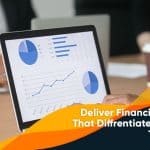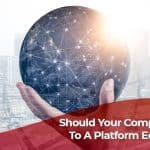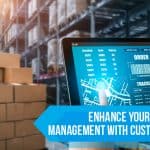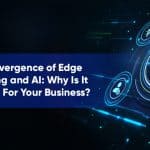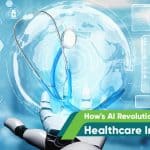Category: Digital Transformation
5 Tips to verify business process expertise of your IT outsourcing partner
From creating growth models to maintaining healthy margins while managing ever-rising prices – industries today face a number of challenges. Being able to face this challenge is what sets successful businesses apart from their competitors. Business process expertise in SAP has helped businesses achieve just that in today’s hyper-competitive environment.
This blog will help you decide if you need industry and business process expertise in SAP. It also gives a few tips to help you verify if your IT outsourcing company is truly a business process expert or not. But before that, let’s find out what is industry and business process expertise in SAP.
What is Business Process Expertise in SAP?
Business process expertise in SAP can be attained internally or externally with individuals or groups of people who are experts in this field. Their job is to bridge the gap between business professionals and information technology.
Related Reading: Create Intelligent Organizations with SAP Model Company
Individuals with business process expertise are not only tech-savvy; they also understand the implications of the business process requirements and factors such as data volume, existing landscape, programming language, and security. They need to frame strategies by keeping in mind the legacy of the organization. They use their expertise in driving innovation within the organization and use best practices that go beyond the scope of a single department. They are ones who can recommend, design, and implement SAP solutions that are tailored for your business.
Why Do Businesses Require Industry and Business Process Expertise?
“Without continual growth and progress, such words as improvement, achievement, and success have no meaning.”-Benjamin Franklin.
True to these words, a business process is not a project with a defined beginning and an end date. If you desire the best results and want to ensure that your process grows and adapts to your business, you need to keep improving them continually. And that is where business process expertise comes to play. Business process experts ensure that your business experiences continual and long-term improvements on various metrics within the organization.
Having business process expertise adds to the skill set required to develop ongoing assessments and action plans, communicate changes and provide the necessary training that impacts your business units. The expertise could be used to identify who is truly performing statistically better or worse compared to others in the unit. This way, business process expertise helps businesses measure and monitor performance improvement initiatives.
Let’s say you are now convinced that your business needs to incorporate industry and business process expertise. The next step is to choose the right IT outsourcing partner with the expertise you need. How can you tell if the company you are looking to hire is a business process expert or not?
Related Reading: 7 Tips To Ensure A Seamless Transition To SAP S/4HANA
Five Critical Skills to Look For In Your IT Outsourcing Partner
Your IT outsourcing partner should be able to understand both your business process requirements and the technologies needed to map, model and implement the required changes within the given time frame and budget. To this end they would require these five skills:
1. Experience: Your IT outsourcing company’s staff should have business process experts who have grown into their role by participating in multiple projects that involved members from both, business and IT.
2. Modeling knowledge: Along with the knowledge of basic principles and theoretical concepts, business process experts should know modeling. They should be able to artfully describe objects, rules, and roles and should be able to relate them to your business process with a descriptive language from your viewpoint.
3. Tool knowledge: An increased number of model-driven tools that go beyond the classical tools are hitting the market. Since the role of your IT outsourcing partner is to build the business process, they should be able to use SAP tools. They should be able to use those tools to impact the level of granularity or modularity of the model. They should also be capable of implementing it within the same tool environment.
4. Internal and external expertise: The company’s experts should be familiar with the internal structures, the evolution, the history and the long-term strategy of your business. They should know who or which unit would give them the needed support. You will have to check their aptitude in understanding your business. Externally, they should be able to bring in fresh views, especially those that have a long-term positive impact on your business.
5. Communication: The experts of the IT outsourcing company need to have the ability to move diplomatically on the slippery floor of communication. They should be able to explain the terminologies to each team without compromising the facts required for decision making and implementation. They should be able to break down complex facts to simple yet accurate definitions.
Take the Next Step – Leap Into the Future
At Fingent, our SAP experts focus on creating measurable results that are customized to your needs. Fingent can help organizations to implement and manage SAP and non-SAP applications using the central SAP Solution Manager platforms.
Talk to us to understand how you can take the leap with our SAP business process expertise.
Stay up to date on what's new

Featured Blogs
Stay up to date on
what's new



Talk To Our Experts
Fingent recognized as the Top PHP Development company by the TechRivewer.
Immense expertise, constant innovative thinking, and deep market understanding make the perfect blend to remarkable excellency. Proclaiming these qualities, Fingent yet again outruns its way to rank the Top PHP Development Company in 2020.
PHP is the most common programming language used in web development today. Be it the simplest applications, or the most advanced ones like Drupal, vBulletin, MediaWiki, or be it the most popular WordPress. Everything works on PHP today. And so it becomes imperative for businesses to find and rely on the right PHP development providers for best services.
Research and review hubs like TechReviewer makes it convenient for businesses to select from a vast pool of development companies. Analyzing through their capabilities, success stories, and client reviews, TechReviewer helps businesses connect with the right technology partners by compiling lists of the leading software outsourcing companies.
Related Reading: Find out how Fingent created Mohawk 360, an integrated day camp management platform, utilizing PHP.
Fingent, a web development company that has proved its worth by delivering upscale web solutions to clients across the globe, is recognized by the brand-new research & analytics agency, TechReviewer.co, as the Top PHP Development Company in 2020.
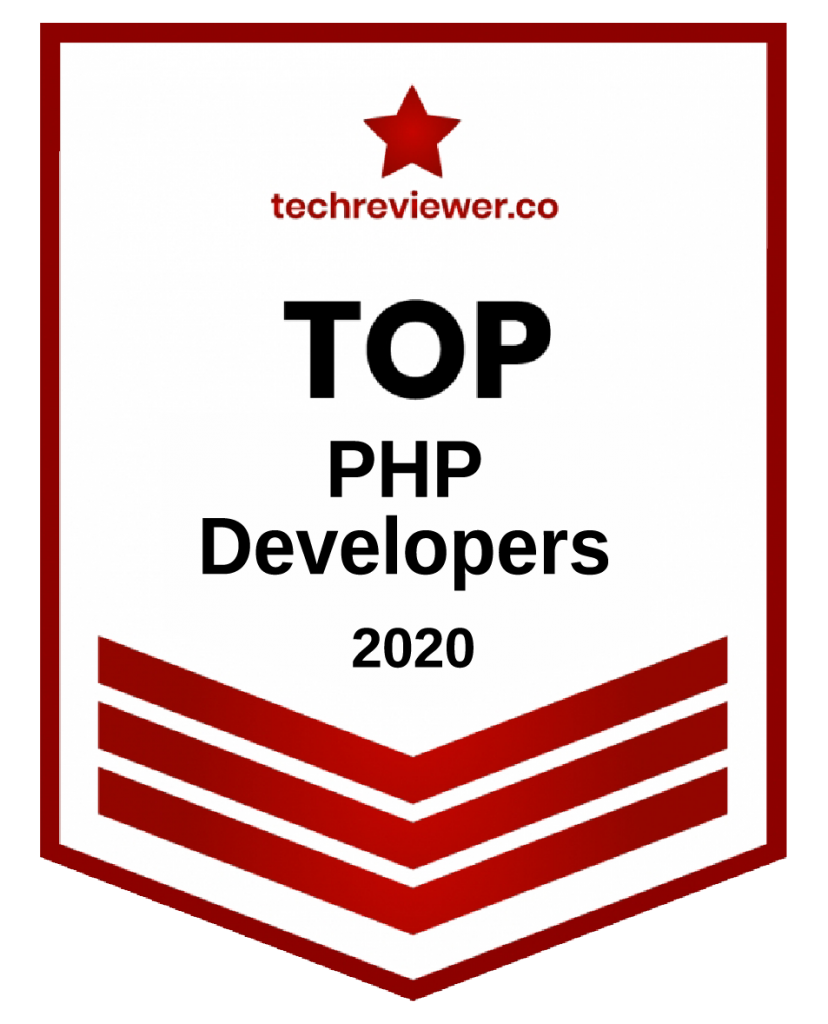
With extensive experience in delivering full-cycle PHP development services along with deep technology expertise, enables Fingent to hit the lists of leading PHP development firms, making it the most reliable, experienced and reasonable company to outsource software development.
Related Reading: Check out our case study to know how Fingent helped develop an Appointment Management System using PHP expertise.
Established in 2003, Fingent strives to solve complex business challenges with customized software solutions. With an active client base across 14 countries and expertise in over 20+ industries, Fingent is a front runner in catering PHP development services. Our research and development team is dedicated to analyzing products based on market trends and targeted audiences. This enables us to provide our clients with an extra edge that helps them sustain and relish the cut-throat market environment.
“We help our clients understand technology in a way that they can leverage the best tools to provide unique and innovative customer experiences. For us, it is not just providing software solutions to our clients, but to help them reshape and transform with technology.”
– Dileep Jacob, Senior Vice President, Global Operations, Fingent.
Being featured among the leading PHP development companies is indeed a great honor for us. We take this opportunity to thank our clients and partners who have placed immense trust in our approaches and services. We will continue to justify the trust with utmost dedication, expertise, and innovative business solutions.
Learn how we can help transform your business for a better future. Get in touch with our experts today to know more about our services, expertise, and technologies.
Also, read more on why Fingent Stamps its authority as a leading CodeIgniter developer of 2020.
Stay up to date on what's new

Featured Blogs
Stay up to date on
what's new



Talk To Our Experts
What is Transfer Learning and how can it help you?
Have you ever tried teaching a baby to recognize objects?
That’s an example of Transfer Learning at work in its most elementary form. Babies as young as eight months old can transfer learning from images to objects. As we grow, we continue to use the same method to learn things. We continue to use the knowledge we gain from one domain to learn other things faster in another domain. This is the concept in Artificial Intelligence that has come to be known as Transfer Learning. This blog discusses transfer learning and its vital role in the future of AI.
What is Transfer Learning?
Transfer Learning is a method in which a model developed for a particular task is used as a building block to solve a different problem. It is a domain of AI, which uses machine learning algorithms to improve learning capacities in one domain through previous exposure to another domain.
Currently, Transfer Learning is gaining much popularity because it can train deep neural networks with lesser data. The goal of transfer learning is to build a model that can be applied to different, yet related problem areas.
It is interesting to note that the pre-trained AI models are called “teacher” models, and fine-tuned AI models are called “student” models. For example, we need not learn and remember that a bus has wheels on four ends. Why? Because we are capable of relating it to what we already know: that a vehicle generally has four wheels. On the other hand, a computer needs to develop such logic by learning all the attributes of a bus. That is the reason why a computer needs much more data than we do. This is where transfer learning comes into play. Transfer Learning aims to reduce the need to use huge amounts of data, by using data available from related domains.
It is important to note that Transfer Learning is different from Traditional Machine Learning. Traditional learning works in isolation, in the sense that it is based on specific tasks and datasets, and separate isolated models are trained through this. The knowledge gained is not retained or transferable to other models. Transfer Learning, on the other hand, ensures that this knowledge is retained and leveraged to train newer models to perform different yet related tasks.
Related Reading: Classifying Knowledge Representation In Artificial Intelligence
Transfer Learning Collaborates Perfectly With AI
Being a fast-evolving frontier of data science, transfer learning can be used by data scientists to tap into statistical knowledge that is gained from previous projects. Its benefits are manifold.
- Boosts productivity: Deep Learning and Machine Learning projects address solution domains for which huge amounts of data have already been collected, used and stored. The same work can be used by data scientists to develop and train fresh neural networks. This boosts productivity and accelerates the time required to gain insight into new modeling projects.
Transfer Learning also enhances productivity when there are close parallels between the source and target domains. For example, deep learning knowledge gained from training a computer to translate from English to Arabic can also be partially applicable to help it learn to translate from English to Hindi.
Related Reading: Why Time Series Forecasting Is A Crucial Part Of Machine Learning
- Risk Reduction: At times, underlying conditions of the phenomenon that has been modeled might change radically. That will render the previous training data set inapplicable. On such occasions, data scientists can use Transfer Learning to leverage useful subsets of that previous training data from related domains as they now build a fresh model.
Transfer Learning can be used to predict certain problems in domains that are susceptible to highly improbable events. For example, a stock-market crash might be useful to predict political catastrophes. This way, Transfer Learning can stand at the forefront of data science by gaining and applying fresh contextual knowledge through various forms of AI.
- Improves learning: Transfer Learning can use the knowledge gained from source models to improve learning in the target model. This improves baseline performance. It also saves time because it does not have to learn from scratch.
Transfer learning allows the use of small datasets to solve complex problems. If a new domain lacks sufficient labeled training data, transfer data can assist in leveraging relevant data from older modeling projects. Applications of deep learning generate enormous amounts of complex data. Managing such data manually would require a lot of human resources. Hence, Transfer Learning is critical for the success of IoT and deep learning applications.
https://www.fingent.com/uk/insights/portfolio/achieve-higher-business-growth-profits-with-artificial-intelligence/
Transfer Learning for Future Innovation
As machine learning and deep learning continue to accelerate, transfer learning will accomplish things with improved efficiencies that were unimaginable in the past. Transfer learning will support deep neural networks in running businesses more efficiently.
In a tutorial called Nuts and bolts of building AI applications using Deep Learning, renowned professor and data scientist Andrew Ng predicted that “after supervised learning — Transfer Learning will be the next driver of ML commercial success.” We are seeing that happen right in front of our eyes. Explore this revolutionary tool with Fingent’s experts and see if this is something that could help your business.
Stay up to date on what's new

Featured Blogs
Stay up to date on
what's new



Talk To Our Experts
CX Solution to Improve Retail Growth
Nurturing communities and building loyalties is now more critical than ever for all retail brands. With instant access to the latest trends and technologies, customers demand better experiences in their interactions with retail brands across all touchpoints. Hence, Customer experience (CX) has become the most important facet of the retail marketing strategy. Retailers, therefore, have to focus on improving CX through every channel.
Importance of CX solutions
Companies can leverage authentic data and modern technology to transform customer experiences and positively impact their business’ future. While most organizations do have systems in place to track the performances of their CX strategies, few track the end-to-end customer journey. Using appropriate CX solutions, organizations can bridge the gap between expected and actual experiences. CX solutions help companies measure and understand the impact of their CX management strategies.
By employing CX solutions, you can manage the interactions that current and potential customers can have with your brand, thus enabling you to meet or exceed their expectations. CX solutions leverage customer interactions to align the brand image according to the customer’s perceptions. This helps you foster strong and long term customer relationships.
Related Reading: 5 Ways to Enrich Customer Experience at Your Retail Store
Top Trends in CX
Staying abreast of the latest technologies and trends in Customer Experience will help you stay ahead of the competition. It’s time to hone your CX strategies by following these latest trends that rule the CX market.
- Omni-channel CX: Customer journeys have become more dynamic than ever. Based on convenience, customers constantly switch mediums. Since the line between physical and digital channels are blurring, customers expect seamless experiences in their interactions across all channels. It’s important for retailers to strike a proper balance between the “traditional” and “online” business models based on their customers’ preferences. Adopting omnichannel customer care strategies will help resolve complex issues quickly.
- Artificial Intelligence: CX enhancement requires comprehending vast amounts of chaotic and complex data in real-time at high speeds. This scenario is most suitable for AI-powered solutions. Using AI, you can replicate human-like engagements (chatbots for example), track customer-behavior and roll out customized campaigns on their preferred channel of operation. Thus you turn your data into valuable customer insights.
- Hyper personalization: Customers expect high levels of personalization and prefer to buy from brands that offer services/products that are fine-tuned according to their requirements. With a hyper-personalized approach, retailers can identify subtle customer traits and deliver highly targeted and relevant services. To develop this level of hyper-personalization, your data and analytics have to be aligned to paint a clear picture of your customers’ choices.
- AR/VR: Augmented Reality (AR) and Virtual Reality (VR) technologies are touted as the “technologies of the future” since they provide highly immersive and engaging customer experiences. AR and VR provide customers with a hands-on experience which helps them make better choices. Many retailers are already reaping the benefits of implementing these futuristic technologies. For instance, Ikea allows customers to check how the furniture would look in their homes before buying using AR. Famous clothing brand Marks and Spencer uses virtual try-on mirrors to boost their store experiences.
- Virtual assistants and chatbots: Virtual assistants and chatbots enable companies to deliver faster and more efficient services at low costs. Some may argue that chatbots lack empathy and hence cannot replace human customer service representatives. However, you should not overlook the fact that advances in AI have given bots the ability to decipher human emotions. By combining the technologies of a virtual assistant and chatbots, you can provide your customers with personalized and empathetic experiences.
Related Reading: Capitalizing on AI Chatbots Will Redefine Your Business: Here’s How
Future of CX
Customer Experience will continue to be crucial for brands to survive in a disruptive business environment. Retailers need to adopt agile models to retain customers and attract new ones. Going forward, CX will also depend on employee experiences. If your employees are empowered, they will in turn care for your customers. Your interactions, both with your customers as well as your employees across all channels need to be more meaningful and effective.
https://www.fingent.com/uk/insights/portfolio/smart-product-ordering-system/
Gartner states that 64% of consumers give more importance to their experiences with a brand than to the price of a product or service. Fingent helps you implement the latest technological advancements to make your CX strategies fruitful. Contact us to know more.
Stay up to date on what's new

Featured Blogs
Stay up to date on
what's new



Talk To Our Experts
SAP Model Company: Understanding the Significance and More!
With changing business requirements, you need IT systems that support rapid business transformation. Your company needs to focus on innovation that is result-driven. Traditionally you had an on-premise style of implementation where you spent around 6-18 months implementing a solution. But this approach is not feasible in today’s ever-changing environment. If only you could find tried and tested solutions that could speed up your digital transformation. Here’s where SAP Model Company comes in.
What is SAP Model Company?
The SAP Model company is a set of pre-configured, ready-to-use, end-to-end business solutions that focus on ramping up the company’s digital transformation process. These solutions are customized for a particular industry or line of business. There are many teams working to outline the core processes of an industry or LOB. They combine the best practices of various successful business transformation projects which are powered by the most modern applications. In other words, you get prepackaged reference solutions that are based on what other companies have done successfully. Thus, the SAP Model Company is so much more than the older typical environments like IDES.
SAP Model Company is an industry solution that helps companies in their move to SAP S/4 HANA. Apart from S/4 HANA, the SAP Model Company also contains SAP C/4HANA, SAP SuccessFactors and many other SAP solutions. It can be used in both Greenfield and Brownfield applications.
Why you need SAP Model Company?
- The complexity of SAP solutions overwhelmed users and hence they demanded guidance.
- SAP users had little or no knowledge of how to use or implement industry and LOB-specific processes using standard practices.
- Changing times demanded rapid innovation. Companies required accelerators that helped to reduce the time of implementation and also reduced the risks of failure.
- Enterprises spent a considerable amount of time on the blueprint phase just to find out that their concept could not be implemented using current technologies.
Significance of SAP Model Company
The SAP Model Company is a true reference solution. In other words, you are to use the Model Company as a dictionary. You look into it for the terms and definitions and choose what you would like to take into your landscape. If you find a 100% fit, you can directly import the processes from the Model Company into your development environment.
However, the Model Company focuses only on really important processes. For instance, a Model company in oil and gas has a very limited scope on how to manage a pipeline, whereas in a real-life scenario you have more than hundreds and thousands of pipelines. You can refer to the configuration guides in the Model Company and then scale out as required.
SAP Model Company is Future-proof!
In the words of Stephan Klein, SVP and SAP Model Company Lead, the Model company is set to become the baseline for the entire SAP product portfolio. It spans across all SAP solutions for on-premise, single-tenant, multi-tenant cloud and hybrid platforms in industries and LOBs and is completely interoperable.
The planned portfolio for 2020 constitutes more than 30 model companies for industries and LOBs. The industry model companies include Consumer Industries, Service Industries, Discrete Industries, Public Services, Energy and Natural Resources. These industry model companies are structured on top of the LOB model companies such as Digital Supply chain, CRM and Customer Experience, Financial Services, HR and People Engagement. The very baseline of the portfolio is built on S/4 HANA Best Practices or on SAP S/4 HANA Multinational Corporation.
Accelerate your business growth and intelligence with SAP Model Company
The SAP Model company contains market standard business processes together with their configurations. It aims to transform business processes by enabling enterprises to adopt industry best practices and incorporate innovative technologies wherever possible.
Here are a few benefits of SAP Model Company:
- Faster time-to-value, freeing up your resources for further innovation.
- Accelerate your digital transformation by reducing costs and risks of implementation.
- Choose the right solution based on the industry reference architecture.
- Lower ratio of service costs compared to software costs.
In the case of a cloud environment, Model Company services can be accessed immediately, within hours. If you want to use the Model Company on-premise, then you can start with your business users, fit-gap analysis or even your business blueprint design right away. You thus accomplish value-based outcomes in weeks rather than in months. Along with greenfield implementations, you can also use the Model Company as a sandbox system to facilitate back to standard discussions with your business. The end-to-end LOB-proven processes allow you to minimize customizations and benefit from the latest innovations with proven standard practices.
Need help with your SAP Model Company implementation? Why not ask the pros? Contact us now!
Stay up to date on what's new

Featured Blogs
Stay up to date on
what's new



Talk To Our Experts
How is AI poised to transform our future?
“Artificial Intelligence is the new electricity. It has the potential to transform every industry and create huge economic value”, says Chinese-English scientist and entrepreneur, Andrew Ng. The impact of artificial intelligence on our daily lives cannot be overlooked. From smartphones to ride-sharing apps, smart home devices, Google search, and Social media- there is hardly any industry or sector that is left untouched by AI.
There has been a huge surge in patenting of artificial intelligence in the last few years. PwC estimates that by 2030, AI would contribute a whopping $15.7 trillion to the global GDP. Analysis by the World Intellectual Property Organization (WIPO) states that the number of AI-related patent applications rose from 18,995 in 2013 to 55,660 in 2017. WIPO Director-General, Francis Gurry says that “We can expect a very significant number of new AI-based products, applications, and techniques that will alter our daily lives and also shape future human interaction with the machines we created”.
Industries such as healthcare, automotive, and financial services were the fastest to adopt AI.
Following are a few key domains that would be impacted most by AI in the coming years:
Related Reading: How AI Integration Helps Maximize Your Business ROI
AI will transform these areas in the coming years:
1. Transport
The general public would widely adopt self-driving vehicles. Apart from cars, self-driving vehicles would also include delivery trucks, autonomous delivery drones, and personal robots. Commutes may shift towards an on-demand approach like the Uber-style “cars as a service approach”. Commute-time would be viewed as a time to relax or just another way to work productively. People would live further away from their homes, reducing the need for parking space. This would change the face of modern cities.
However, enhanced connectivity, real-time tracking, traffic gauging, route calculations, peer-to-peer ride-sharing, and self-driving cars would be impossible without personal user data. This calls for the need to implement more stringent measures to secure the data and privacy of citizens.
2. Home/ service robots
Robots have already entered our homes in the past fifteen years. Recent advances in mechanical and AI technologies substantiate the increasing safety and reliability of using home robots. In the foreseeable future, we can expect special-purpose robots to deliver packages to our doors, clean offices and enhance security.
We are already familiar with the vacuum cleaning robot – Roomba, which has gained its place in millions of homes across the world. The AI capabilities of these kinds of robots are being increased rapidly with drastic improvements in the processing power and RAM capacity of low cost embedded processors. Low cost and safe robot arms are being used in research labs all over the world. Further advances enabled by deep learning will enable us to better interact with robots.
3. Healthcare
Healthcare is a promising domain for the use of AI technologies. AI-based applications have started gaining the trust of doctors, nurses, and patients. By revising the policies and other commercial regulations regarding the development and usage of such applications, AI can be used to improve health outcomes and quality of life for millions of people in the coming years. Patient monitoring, clinical decision support, remote patient monitoring, automated assists to perform surgeries, and healthcare management systems are some of the potential applications of AI in healthcare.
4. Education
AI has the potential to enhance education at all levels, by providing personalization at scale. While computer learning will not replace human teachers, Massive open online courses (MOOCs) will help students learn at their own pace with techniques that work for them. AI technologies such as Natural language processing, machine learning, and crowdsourcing are giving an impetus to online learning. If these technologies can be meaningfully integrated with face-to-face learning, AI will find more applications in our classrooms.
5. Entertainment
AI has already transformed this domain to a considerable extent. AI-driven entertainment is gaining huge traction and response from the masses with overwhelming enthusiasm. AI-enabled entertainment will become more interactive, personalized and engaging by 2030. However, the extent to which technology replaces or enhances sociability is debatable. More research is required to understand how to leverage these attributes of AI for the benefit of society.
Related Reading: Building Incredible Mobile Experiences by Combining AR and AI
Concerns about AI
Advances in AI have already impacted our lives. However, you may also have heard of the dire predictions regarding AI made by some of the brightest minds such as the late scientist Stephen Hawking and Elon Musk (Tesla and SpaceX chief). Pew Research Centre surveyed some 979 technology experts to find out whether advancing AI and related technology would help or harm humanity. 63% of the respondents were hopeful of a better future in 2030. Many of them said that all would go well only if the concerned authorities paid close attention to how these tools, platforms, and networks are engineered, distributed and updated.
Following were the concerns that were mentioned most often:
- Individuals would lose control over their lives due to the use of AI
- Surveillance and data systems that favor efficiency over human betterment would be dangerous.
- AI would cause millions of people to lose their jobs leading to economic and social upheaval.
- As people continue to depend on AI, their cognitive, social and survival skills would be diminished.
- Cybercrime, cyberwarfare and the possibility of essential organizations being endangered by weaponized information would open new facets of vulnerabilities.
Overcoming the concerns
Following are a few solutions to take positive advantages of AI:
- The global population should join hands and create cohesive approaches in tackling AI’s challenges.
- The development, policies, regulation, and certification of autonomous systems should undergo essential transformations to ensure that any kind of AI development would be directed towards the common good.
- Corporate and government organizations should shift their priorities towards the global advancement of humanity rather than profits and nationalism. AI advances should be aimed at human augmentation, regardless of economic class.
Nicholas Beale rightly said, “AI done right will empower.” As artificial intelligence continues to be embedded in most human endeavors, let us make broad changes for the better. Let us be more thoughtful about how these technologies are implemented constructively.
If you would like to know more about Fingent’s development and implementation approach on AI, give us a call.
Stay up to date on what's new

Featured Blogs
Stay up to date on
what's new



Talk To Our Experts
Stay up to date on what's new

Featured Blogs
Stay up to date on
what's new



Talk To Our Experts
How AR and AI work together to build unique mobile experiences?
The intriguing partnership of Augmented Reality (AR) and Artificial Intelligence (AI) is a match made in the digital heaven. An AR application can become more beneficial when AI is incorporated into it. The natural bridging of AR and AI enables mobile app developers to build more interactive and intriguing apps. This article explores a few practical ways in which AR and AI can be combined to build incredible mobile experiences.
Awesome Ways AI and AR Complement Each Other
The partnership between AR and AI is likely to have a profound impact on customer experience. Companies are developing next-generation applications for mobiles that employ AR and AI technologies. In fact, AI is the heart of AR platforms.
Related Reading: How Top Brands Embrace Augmented Reality for Immersive Customer Experiences
Though Artificial Intelligence and Augmented Reality have distinct technologies, they can sync with one another on a variety of applications. They can leverage each other’s best features and aspects building incredible mobile experiences. AI enables AR to have a multidimensional interaction with the physical environment. It allows you to manipulate 2D and 3D virtual objects with your words, eyes, and hands.
It is anticipated that the demand for AR apps is bound to soar in the next four to five years. Hence, the search for appropriate software development kits (SDK) and application program interfaces (API) for AI and AR is on.
Current State of SDKs and APIs For AR and AI
As the capabilities of current SDKs (Software Development Kits) and APIs (Application Programming Interfaces) rapidly expand, the number of commercial opportunities increase exponentially. Consider a few examples:
-
- Vuforia: It is an Augmented Reality SDK that enables app developers to build mobile-centric, immersive AR experiences. It is capable of supporting both IOS and Android, allowing brands to develop apps with minimal commercial and technical risks.
- ARCore: It is Google’s proprietary AR SDK. It enables developers to get their AR apps up and running on mobile devices. ARCore supports IOS devices and allows developers to build rich and immersive AR experiences supported by mobile devices.
- Core ML: It is a Machine Learning framework used across Apple devices. This API allows you to perform real-time predictions of live images on your device. Its low latency and near real-time results are its biggest advantages. Core ML is an application that can be run without network connections.
- TensorFlow Lite: It is an open-source deep learning framework focused on mobile device inference. TensorFlow Lite enables developers to insert their own custom models.
Practical Ways to Combine AR and AI
The marriage of AR and AI opens up endless opportunities. Here are a few ways in which this combination is working to create digital miracles.
1. Speech recognition: As an AI model listens to what you say, AR effects appear in front of you. For example, if you say ‘pizza,’ a virtual pizza slice appears in front of your mouth.
2. Image recognition and image tracking: It allows customers to see how an object would look and fit in a given space. Combining AR with AI technology allows users to move still photos of items into a still image of a room and assists them in making a decision. Example: IKEA Place.
3. Human pose estimation: It is a technique that detects human figures and poses. It predicts the positions of a person’s joints in an image or video. This can be used in controlling AR content. Yopuppet.com is one example.
4. Education: It allows students to have new perspectives through interaction with virtual reality. For example, it enables them to visualize and interact with a 3D life-size version of the human body.
Related Reading: Impact Of Augmented Reality In Education Industry
5. Recognizing and labeling: When the camera is pointed to a scene or an image, the AR app displays a label that indicates the object or the item when it recognizes it.
6. Car recognition: Using a smartphone camera, it allows its customers to sit inside the car and explore the car’s interiors. There isn’t even a need to download the application.
7. Object detection: AR-AI combination can be applied to automatically learn and detect the position and extent of the objects within an image or a video. This mobile-friendly model facilitates interaction between physical and digital objects.
Take Away
The bridging of AR and AI is offering businesses an opportunity to empower their customers more than ever before with information shared in captivating ways. Together, AR and AI continue to enhance mobile experiences. It enables developers to design richer and more intuitive, relevant experiences for their diverse consumers. As we noted earlier, the applications of AR and AI are numerous.
To know more about how Fingent can help you build incredible mobile experiences by combining AR and AI, get in touch with our experts today!
Stay up to date on what's new

Featured Blogs
Stay up to date on
what's new



Talk To Our Experts
Why Clutch Ranks Fingent As The Top Software Development Company In Australia?
Over the past 16 years, Fingent has partnered with clients across 4 continents and collaborated with start-up, mid-market, and large enterprises to solve business challenges with the latest custom software development practices. Our core values make us highly attentive to society, peers, family & self, and above all, customers. We are grateful that this client focus is recognized in reviews on Clutch and has enabled us to achieve the position of the leading software developer in Australia.

Clutch is a B2B rating and review platform with thousands of company profiles. Clutch carefully analyzes and evaluates industry data, brand reputation, and most importantly, client testimonials to craft authentic descriptions of development companies and their services. When a company is facing a business challenge, Clutch stands as a directory to browse through and find the right solution provider. Clutch connects businesses with leading performers, who receive industry recognition for their excellent services. When it comes to software development, Fingent ranks as the Top Software Developer in Australia. Here’s a peek into Clutch’s leader matrix, where Fingent stands top on the charts of Market Leaders in comparison to the competing companies.

We are extremely thankful to the clients who took the time to share their experiences about Fingent solutions and services on Clutch. Most recently, Sapra & Navarra LLP left us a review on our ongoing development services for their law firm. We were hired by Sapra & Navarra LLP to build a web-based AI machine learning program. Besides receiving 5.0 stars in the Clutch evaluation categories of cost, scheduling, quality, and willingness to refer, Sapra & Navarra LLP appreciated our accessibility and efforts to prioritize being available to answer any questions or concerns. They also applauded our organization, including our robust agendas of maintaining transparency through meetings and conference calls.
Check out a summary of the perfect 5.0 review below!
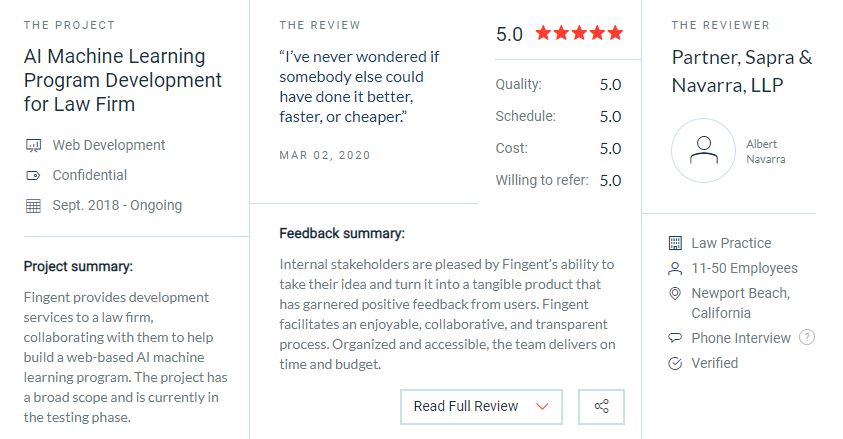
Once again, we are very grateful to our clients for sharing their positive feedback on Clutch. It inspires us to continue delivering unique, budget-friendly solutions on time.
“We are excited to have been chosen as a top ASP.NET developer and NodeJS developer for 2020 by Clutch.”
– Stephen Cummings, Senior Vice President – Business Development, Fingent
If you’re looking for a technology partner who can build a web or mobile app, deploy RPA or AI technology, or provide software consulting, please get in touch! We’d love to discuss your latest project.
Stay up to date on what's new

Featured Blogs
Stay up to date on
what's new



Talk To Our Experts
How to prepare for IoT in 2025?
It’s 2020 already and the Internet of Things (IoT) is here to stay. We’re at the cusp of a new era wherein intelligent digital connectivity is a part of our day-to-day lives. Gartner predicts that there will be 25 billion connected devices by 2021. Thus, IoT has made its presence felt across various industries.
Upcoming IoT trends that can shape the business landscape
1. Industrial IoT and Digital Twin technology:
IoT has made manufacturing smart, efficient and less risky. Using digital twin technology, organizations can access the context, structure, and behavior of an asset. Thus, you have the information regarding the past and present state of an asset with an ability to look into the future. Organizations are therefore receiving warning alerts and predictions faster than ever before. Investing in a digital twin can be a part of your IIoT strategy so that after implementing sensors into your machines, you can document their operations and fine-tune them.
2. Computing would be balanced between the cloud and the edge:
While those new to IoT consider cloud as inevitable, high data transmission costs for remote business environments have moved computing to the edge. In many industrial sectors, shifting some analytics intelligence to the edge may prove cost-effective. With edge devices becoming more affordable and centralized infrastructure becoming more stressed, there would be a balance between cloud and edge.
3. Sustainability will become important:
Sustainability efforts have become a key business priority across the globe. The World Economic Forum reports that IoT projects can help to accomplish the UN’s 2030 Agenda for sustainable development. IoT can have a large impact on global sustainability as it connects people and things. IoT can be used to reduce e-waste, promote agricultural sustainability, save energy, protect species, reduce emissions and so on.
How to gear up for the IoT boom in 2020?
While IoT promises attractive growth potential, many companies lack the technical capabilities and know-how to make their IoT projects work. A recent survey found that almost 75% of IoT projects end up as failures. Following are some of the ways in which you can prepare for the IoT surge:
Related Reading: IoT Implementation: Common Mistakes And Strategies To Tackle Them
- Plan Ahead: The major challenges that cause IoT projects to fail are budget overruns, limited internal expertise, long completion times, lack of proper data. All of this boils down to planning. You need to organize your projects, asses your budget needs, calculate the time requirements and assess whether your team has the expertise to handle the project. If you lag on any of these points, it is better to postpone the project rather than not finishing it at all.
- Establish partnerships: Implementing IoT products can be very taxing due to the complex technology involved. The task can become almost unmanageable without a network of partners. You can establish partnerships for technological expertise or data and content delivery. Pioneers like Facebook, Amazon or Google have built entire ecosystems by establishing partnerships with hundreds of thousands of specialized developers.
- Integration: Successful IoT implementation requires robust connectivity, infrastructure, and seamless integration of your enterprise application/ systems with proper third-party wares. Challenges such as integration of the IoT platforms to enterprise applications and integration of edge/ cloud computing devices to the IoT platforms are most prevalent. By forming a strong IoT solution team with IoT architects and other subject matter experts, you can solve challenges across the IoT solution landscape.
- Ramp up the security: Cybersecurity is going to be one of the biggest risks in an increasingly connected world. Since everything that can be connected to the internet is exposed to a security risk, it is critical to secure every connected device. You need to be prepared with a game plan to tackle such types of data breaches. If you find that your business is ill-equipped to meet the security needs of your IoT network, don’t worry; you can always outsource.
Related Reading: The Pros and Cons of Outsourcing Mobile App Development
- Data storage: IoT is all about data. Cisco estimates that IoT devices would generate about 847 zettabytes of data per year by 2021. You can invest in your own local data storage system (which would be expensive) or you can find a cloud storage provider. Edge computing is another possible solution that is preferable over the aforementioned ones. In this system, the data is pushed to the ‘edge’ for quick access and to prevent data overload.
- Be ready to transform: Partnerships are important. But you’ll also have to set up your own software and big data capabilities which are far beyond the existing levels. The team should focus on transforming itself into a technology company that understands the capabilities of IoT. Be responsive and address all concerns that rise up during the course of the project.
- Innovate dynamically: A dynamic operating model requires cooperation. Innovative approaches like hackathons can be used to advance new ideas that meet the market demands of the digital world. Having the courage to take risks is an important part of dynamic product development. Even if ideas fail, it is important to keep trying and be consistent.
The Internet of Things (IoT) is set to bring about lasting changes across various industrial sectors. Business leaders who stay agile can rest assured that they won’t be left behind.
Need any tips on how to harness the power of IoT in your business? Contact us now!
Stay up to date on what's new

Featured Blogs
Stay up to date on
what's new







